One idea was to simply make all inputs of the ICs the same, and essentially turn on and off the ICs by connecting it's Vcc to ground
That's a BAD idea and I'm sure that it will not work.
Why? Because almost every chip has input ESD protection circuits like this:

Note top left the diode between VIN and VCC.
In your proposal VCC would be grounded, that means any positive signal applied to VIN will make the diode go into forward mode. This will load the VIN line which is your "databus" limiting the voltages to about 0.7 V. This means your "databus" will not work anymore.
A better solution would be to use a PCF8574 based solution which gives you many pins controlled from a single I2C port on the Arduino. There are many example schematics to be found using this solution for driving a 1602 LCD module from an Arduino.
Edit:
The NTW74141 does not have a very extensive datasheet.
I found a datasheet of the (original ?) Texas Instruments part it was based on, the SN74141. This does show an input circuit which is a bit different from the 2 diode ESD protection:

If the circuit really is like that also on the NTW74141 then the issue I described above does not happen and what OP proposes (enable/disable via supply rail) could work. It is still not an elegant solution but it could work.
You could also use the diode-test of a multimeter to check if the ESD diode is present between input an Vcc as in the first picture or not.

